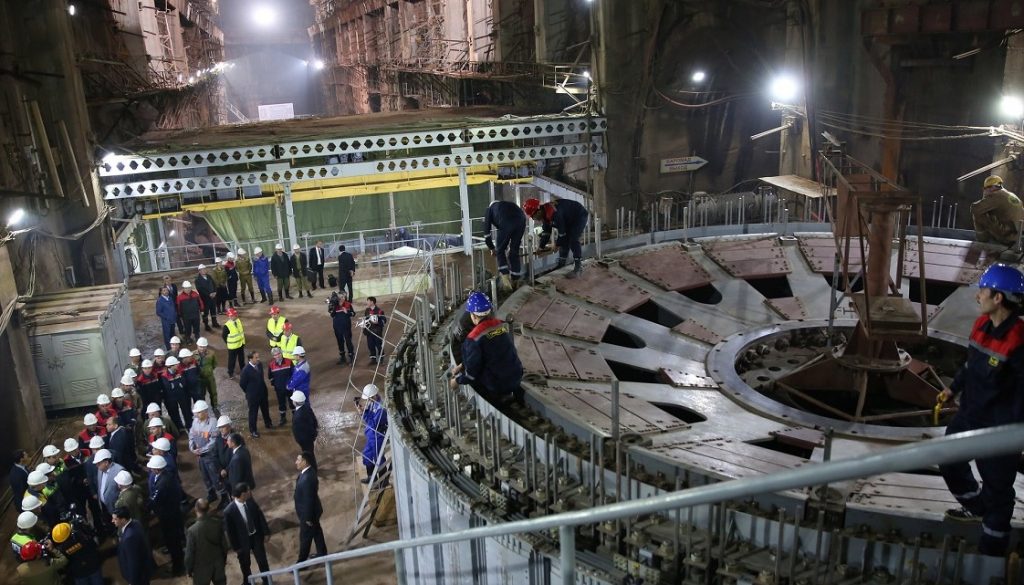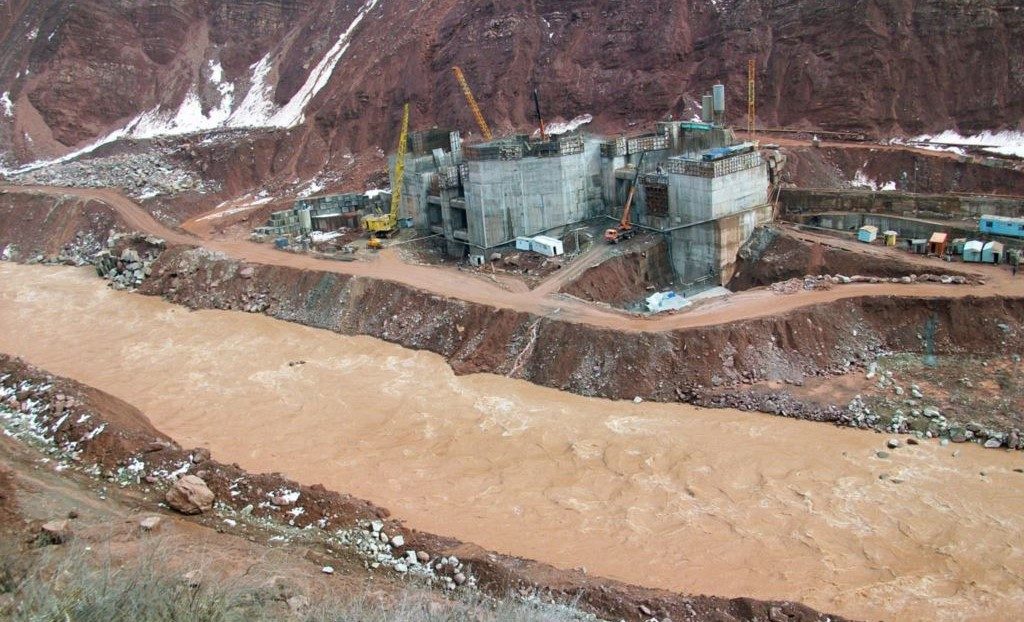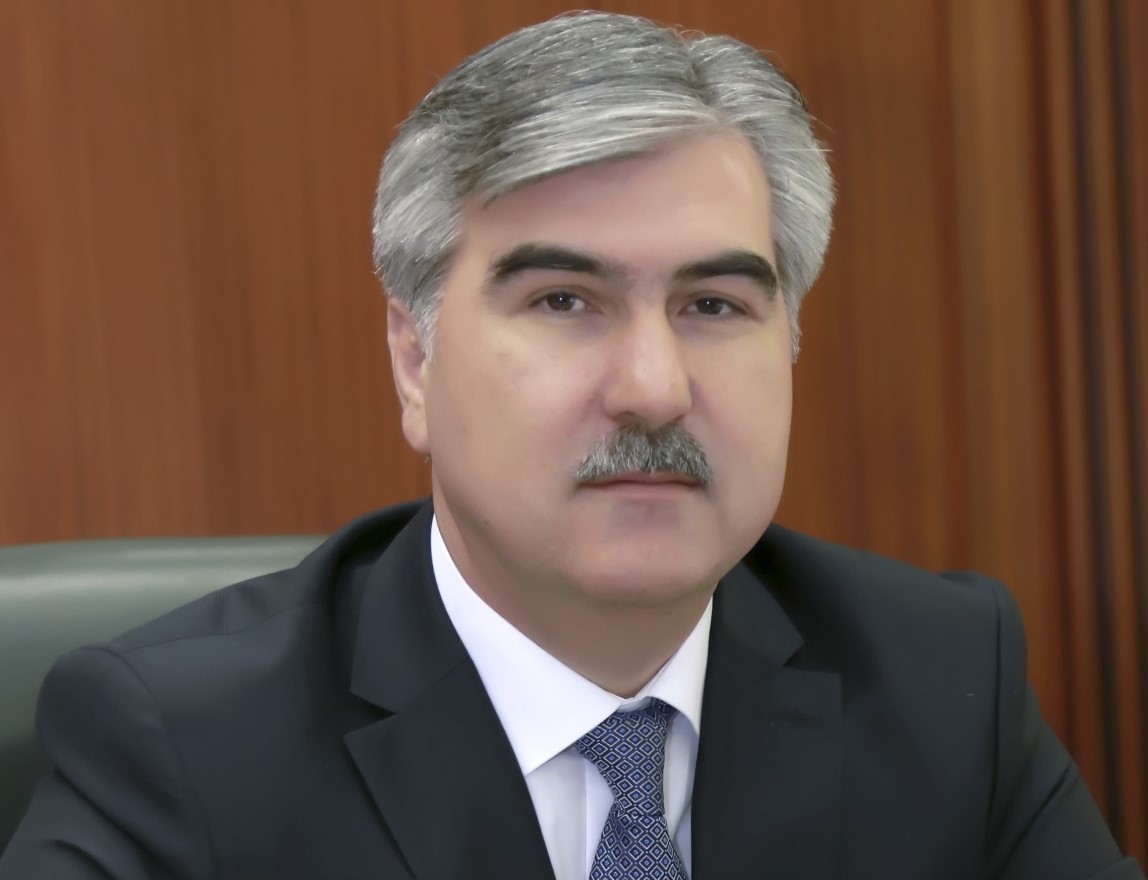The workers involved in the construction of the Rogun hydroelectric power plant have no money even for a ride home.
Follow us on LinkedIn!

According to 40-year old Akram, one of the builders of the Rogun hydroelectric power plant, they were promised a salary before the presidential elections, which were held on November, 11.
“Then they said they would pay us after the president’s arrival. The president came to the power plant after the election, but we were not paid again. We asked the company for a loan, but they say they also did not get paid, so they also need money”, said Akram. Alongside Akram, other workers at the Rogun hydroelectric power plant complained that they were not being paid. They point out that the employees of the Italian Salini Impregilo which is the general contractor for the construction of the Rogun hydroelectric power plant are getting paid on time, only the workers of the Tajik companies are not getting paid since summer. Many companies are involved in the construction of the site, the majority are local.
Muhammad comes to work in Rogun from Rasht. His shift lasts 15 days, then the same number of days he rests. According to him, at the end of the 15-day shift, when it is time to go home, his colleagues barely hold back their tears.
“Especially those coming from other regions. They do not even have the money to go home. What could be worse than that?”, asks Muhammad.
More than USD1.5 billion is needed to complete the project, and it is unclear where the Government of Tajikistan will get this money. For this purpose, one billion US dollars have been borrowed, and almost the same amount of money has been collected from the population.
At the moment, hundreds of employees of the Rogun hydroelectric power plant cannot get their salary, and the power plant for the first two years of operation of two units has already owed the budget millions of somoni.
In June, the Minister of Finance promised to pay staff salaries, but they say that they did not receive the promised amount. The non-payment of wages is not the only problem of Rogun today. The Tajik Tax Committee reported in October that the Rogun hydroelectric power plant had become one of the country’s largest tax debtors. According to the Tax Committee, over the last two years of operation of the units, the Rogun HPP owed 43.2 million somoni in taxes (over 4 million US dollars).
Construction of the Rogun HPP: stocks and eurobonds
The construction of the Rogun power plant dates back to the time of the Soviet Union. However, with the collapse of the Soviet Union and the beginning of the civil war in Tajikistan, construction works have stopped.
In 2004, during the visit of Russian President Vladimir Putin, the Government of Tajikistan signed a contract with the Russian company “Rusal” for the construction of the Rogun HPP. But later, Tajikistan unilaterally cancelled the deal, and the Government announced that it would build the facility from domestic sources.

To this end, in 2010, the Government of Tajikistan launched a campaign to sell shares of the Rogun HPP, raising 186 million USD from citizens and companies. According to the Tajik media, citizens, particularly civil servants and businessmen were often forced to buy shares.
Considering that over 60 per cent of the population of Tajikistan lived below the poverty line, The World Bank advised the Tajik authorities to refrain from continuing the campaign. Following this recommendation, the campaign was closed. However, the funds received from the sale of shares were used for the construction of the Rogun HPP.
In 2016, the Tajik Government signed a USD3.9 billion contract with the Italian company “Salini Impregilo” to complete the construction of the Rogun HPP.
In 2017, the Government also invested in the Rogun construction project funds from sales of eurobonds in the amount of one billion US dollars.
The Government admits that Rogun cannot be built at the expense of the budget.

Currently, Rogun is being built mainly at the expense of funds allocated from the budget of Tajikistan, annually amounting to more than 2.1 billion somoni (over USD200 million).
In February 2020, the Minister of Finance Fayziddin Kakhorzoda admitted in a press conference, that Tajikistan will not be able to complete the construction of the Rogun HPP on its own.
However, the Tajik authorities have not yet been able to find a foreign investor.
Bakhrom Sirojev, Senior Advisor in the Energy Project Development Group under the President of Tajikistan, in April of the current year said that the Government is in talks with the German company “Voit” about the construction of the Rogun HPP.
According to Sirojev, “this enterprise is ready to provide a loan of 400 million euros for the delivery of four units of the Rogun HPP and to participate in the construction of the hydroelectric power plant itself.” Nine months after the release of the statement, the project was never implemented.
Saidmukhiddin Dustmukhammadien, Tajik analyst believes that contrary to official statements, the authorities plan to complete the construction on their own.
“Construction costs range from 150 to 200 million US dollars per year. This money can be invested from the state budget”, says Dustmukhammadien.
He considers it unlikely that the authorities would withhold funding for the construction of the facility, where the main contractors are “the Government and private companies close to the ruling elite of Tajikistan.”
According to Dustmukhammadien, Tajikistan will be able to get a long-term loan for the purchase of the remaining four units of the HPP.
Another Tajik expert, who wished to remain anonymous, also suggested that the Government had not actually abandoned the idea of completing the Rogun project on its own.
“All attempts by the economic bloc to obtain external financing have failed. And announcements about investors are made to reassure the public”, he thinks.
According to him, given the high level of unemployment, it was not difficult for the authorities to provide construction personnel.
At the same time, the expert did not rule out that part of the problem of late payments could be related to the abuse of local contractors.
According to Akram, the builder of the HPP, shops in his home village refuse to lend to his family.
“We do not know who to borrow from. You start complaining to your supervisors, they directly say to quit, if you do not like working. And we have nowhere to go, there is no work anywhere”, says Akram.
International financial institutions have repeatedly called on the Government not to allocate funds from the budget for the construction of large facilities such as Rogun, as this could negatively affect social security programs.
Experts say that the construction of the Rogun HPP can be completed by 2026, that is, by the deadline for the activation of the last unit.
This article was prepared as part of the Giving Voice, Driving Change – from the Borderland to the Steppes Project. The opinions expressed in the article do not reflect the position of the editorial or donor.

